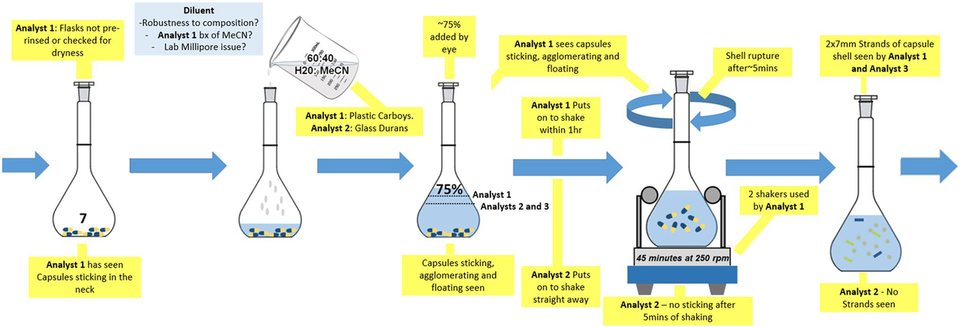Britest tools used to improve robustness of analytical sample preparation
A new publication by an international team of authors from Astra Zeneca Pharmaceutical Technology & Development, Operations describes how Britest process understanding tools have been successfully applied, in conjunction with experimental design, to some of the challenges associated with sample preparation procedures encountered when developing quantitative assay methods for solid-oral dosage forms (tablets and capsules).
The new paper in the journal Chromatographia describes approaches utilising experimental design, data visualisation and process understanding tools used to highlight the importance of common sample preparation factors on drug recovery in product formulations. For a tablet formulation, experimental design highlighted that the percentage of organic in the sample diluent and the orbital shaker speed were statistically significant and could impact accuracy of assay result. For the second formulation, a gelatin capsule, the use of experimental design and the Britest process understanding tools highlighted the initial volumetric flask fill volume required close control to ensure reproducible assay results while the stand time (time sample left to stand post-shaking to aid analyte solubilisation) and capsule storage conditions were also significant.
The nature of excipient materials added to the drug substance to create a formulated pharmaceutical product means that the preparation of drug product samples for chromatographic or other quantitative analysis can be manually intensive and time consuming, so this deployment of data visualisation tools including Britest's Initial Screening Analysis (ISA), Rich Pictures and Process Information Summary Map (PrISM) has contributed to an intensely practically beneficial outcome in the analytical laboratory.

Britest toolkit Rich Picture Process Information Summary Map (Rich-PrISM) of gelatin capsule sample preparation regime
Reacting to the news, Britest CEO Mark Talford said,
"The creative thinking associated with this work has already been recognized within the Britest innovation community through a Britest Day poster prize, so we are delighted that this has now been reflected in a peer reviewed publication,"
The full paper is accessible (by purchase or subscription) here. You can also read a brief account of the process understanding focused aspects of the work in this short Britest case study.